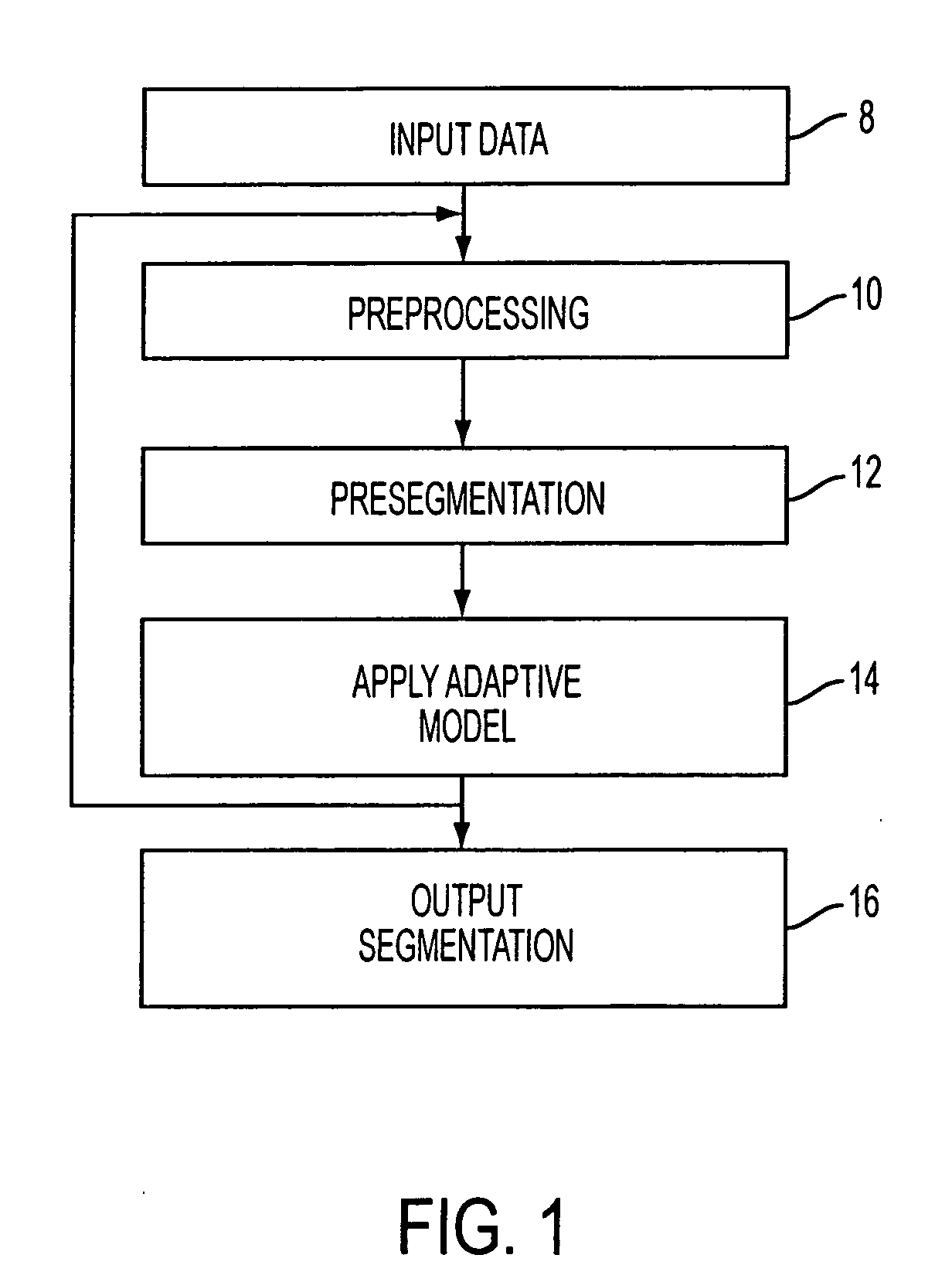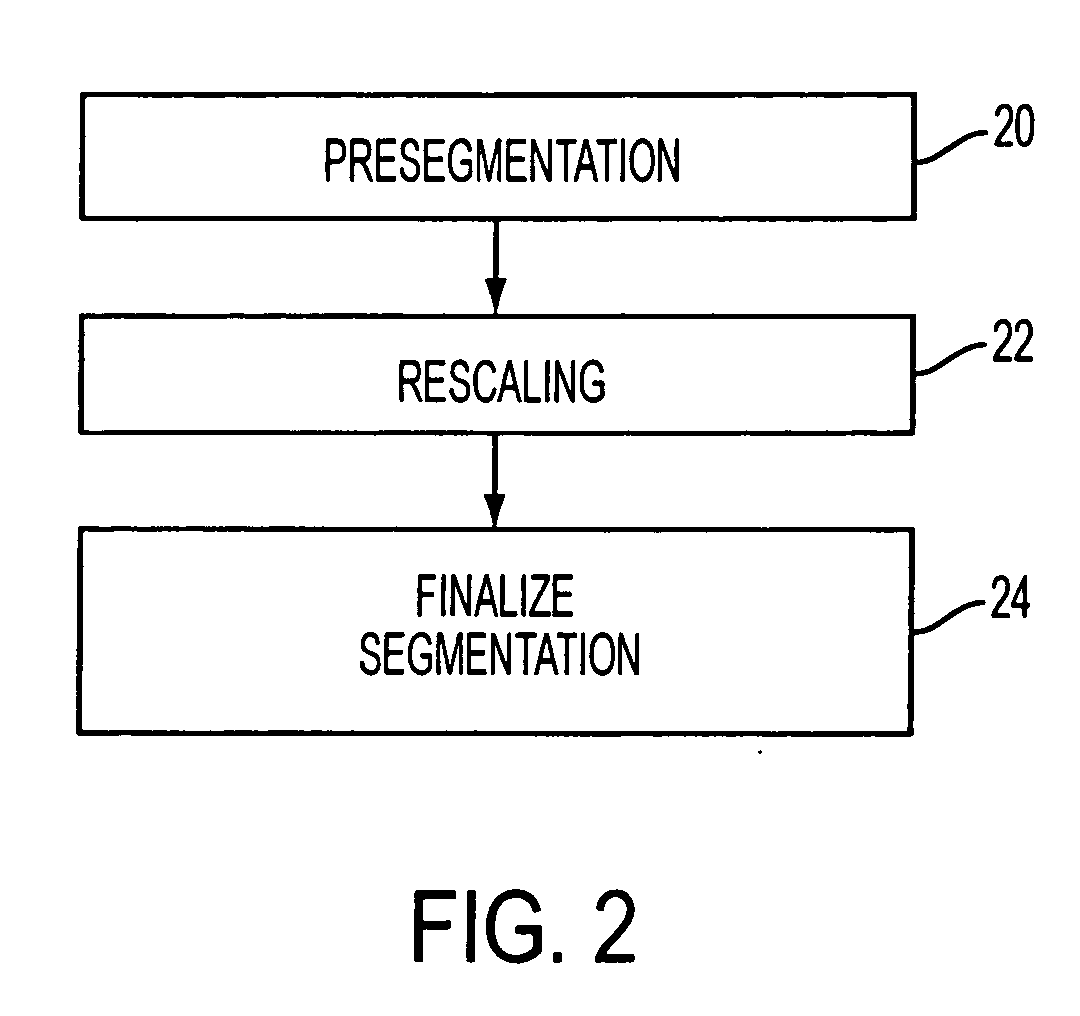Model based adaptive multi-elliptical approach: a one click 3D segmentation approach
a multi-elliptical, model-based technology, applied in the recognition of medical/anatomical patterns, instruments, computing, etc., can solve the problems of difficult generalization of steps necessary for the successful segmentation of objects, affecting the quality of measurements as well as the quality, and a more substantial and time-consuming process. achieve the effect of reducing the amount of time and effor
- Summary
- Abstract
- Description
- Claims
- Application Information
AI Technical Summary
Benefits of technology
Problems solved by technology
Method used
Image
Examples
Embodiment Construction
[0031]FIG. 1 illustrates the method in accordance with one aspect of the present invention. In step 8, medical image data is input into a computing system in accordance with one aspect of the present invention. In step 10, preprocessing on the image data is performed. In step 12, presegmentation on the image data is performed. In step 14, an adaptive model is applied to segment a structure in the medical image data. In step 16, the segmented structure, along with any other desired image information, is output to a user.
[0032] In step 14, there are two different adaptive models that can be used in accordance with various aspects of the present invention. The first adaptive model is an adaptive bounding box model and the second is an elliptical model approach. The steps illustrated in FIG. 1 as well as the different adaptive models will be explained further.
[0033] The first step 8 is to input medical image data. While the segmentation has been applied to CT, PET and MR images, there...
PUM
 Login to View More
Login to View More Abstract
Description
Claims
Application Information
 Login to View More
Login to View More - R&D
- Intellectual Property
- Life Sciences
- Materials
- Tech Scout
- Unparalleled Data Quality
- Higher Quality Content
- 60% Fewer Hallucinations
Browse by: Latest US Patents, China's latest patents, Technical Efficacy Thesaurus, Application Domain, Technology Topic, Popular Technical Reports.
© 2025 PatSnap. All rights reserved.Legal|Privacy policy|Modern Slavery Act Transparency Statement|Sitemap|About US| Contact US: help@patsnap.com



